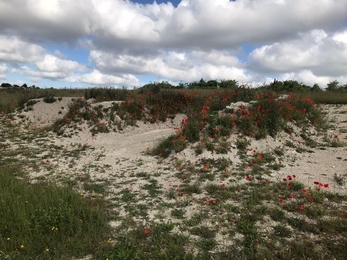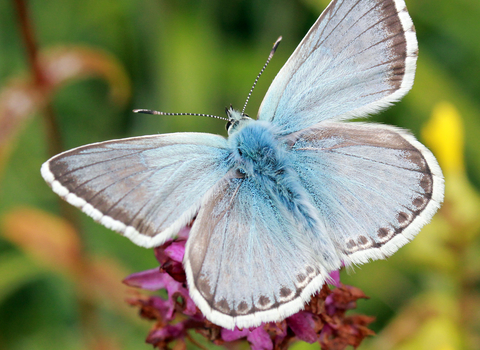It has now been one year since butterfly banks were built on Wildlife Trust nature reserves in Pegsdon and Totternhoe, Bedfordshire. In September 2021, eight banks, each 15 metres long and two metres high, were constructed with diggers, taking scrapings of chalk earth to transform areas of previously flat habitat. Four banks were put in place on each site in the shape of giant letter E’s, with one E facing each direction of the compass, providing a wide range of microclimates across their many different slopes.
Although butterfly banks have been used before in many locations, this project is the first time that they have been surveyed and analysed in this way, to see how they can help support whole communities of species during periods of climate change.






